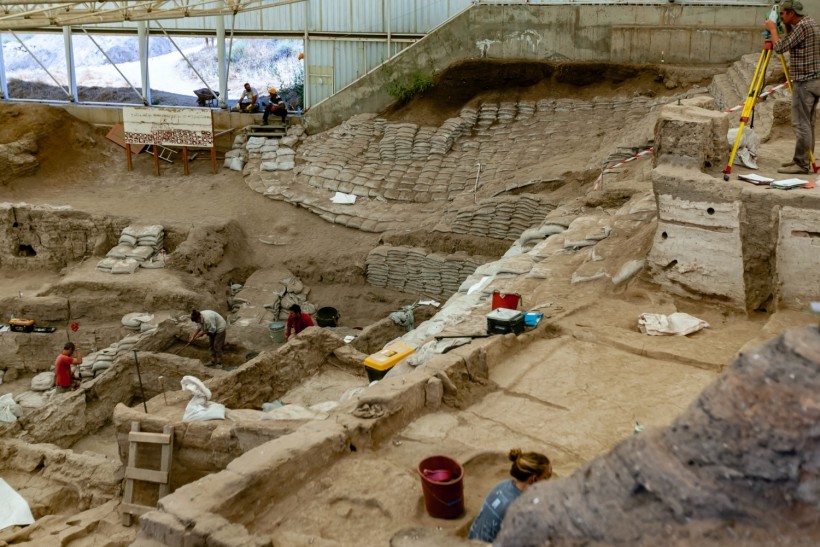Bournemouth University students found five 2000-year-old human remains at the Iron Age settlement in Dorset. Along with the human remains, the students also found animal sacrifice remains.
The remains were in crouch positions in oval-shaped pits. They were buried with joints of meat and pottery bowls.
In the last three weeks, 65 students from the same university excavated the site. During this period, they discovered bodies of men and women and animal body parts in storage pits.
According to Dr. Miles Russell, an archaeologist at Bournemouth University said, the sites across Dorset in the Late Iron Age are unique because the communities buried their dead in defined cemeteries. He added that the people during the Late Iron Age did things differently in terms of burying their dead. He noted that in some places in the country, the dead would either be cremated or placed in rivers.
The theme planned to continue excavating for another week and analyze the human bone they discovered. They also plan to scan and survey the east Dorset area to know more about the settlement activities of the people who lived there 2000 years ago.

Çatalhöyük was a very large Neolithic proto-city settlement in southern Anatolia, which existed from approximately 7500 BC to 5700 BC, and flourished around 7000 BC. In July 2012, it was inscribed as a UNESCO World Heritage Site
Iron Age Lifestyle Discovery
The team found the new clues fascinating as they provided them about the people who lived on the site during prehistoric times. The discovery also helps them identify the items from prehistoric times and the things that they used in their everyday lives.
According to Dr. Russell, life in Britain during and after the Roman invasion is known to everyone because of the literature written about it. However, Russell said that there was no information about the people and their way of living before the said period. The archeologist said the answers to those questions came solely from what they found in the ground.
The latest discoveries not only cover the culture and the daily activities of the prehistoric people but also their religious practices.
"The animal remains that we're finding placed in the bottom of pits would have provided weeks of food for this settlement, so it's a significant sacrifice to their gods to bury so much in the ground. In some pits, animal parts had been placed onto and together with other animals, for example, we found a cow's head on the body of a sheep." Rusell said.
One of the dig team members, Nathan Sue, said that they discovered a ring on someone's finger, which they believed was connected to a burial. He said the ring was made from copper alloy, which was not common at the time.
Another member of the dig team said that the storage pits they found contained the rubbish of the people. She said that they found charcoal, bone, pottery, and flint.
ALSO READ: 2,500-Year-Old Bronze Age Relics Accidentally Discovered in Swedish Forest
Duropolis Excavation History
In 2015 a team of students and staff from the university excavated an area of the standard for hectares, which is known today as the Duropolis. During this year, the team unearthed skeletons and roundhouses.
In 2016, the team on earth had a late iron age cemetery with eight bodies. Another discovery during this year is the Roman farming settlements dating from AD 300 to 450. The farming settlement had five buildings, kilns and ovens.
RELATED ARTICLE: Chinese Trove Recently Unearthed in Sanxingdui Site Offers a Glimpse of Ancient Kingdom's Mysterious Side
Check out more news and information on Environment in Science Times.



![Earth's Quasi-Moon Kamo‘oalewa Could Originate From Lunar Surface Not Asteroid Belt [Study]](https://1721181113.rsc.cdn77.org/data/thumbs/full/53275/89/56/50/40/earths-quasi-moon-kamo-oalewa-could-originate-from-lunar-surface-not-asteroid-belt-study.png)










